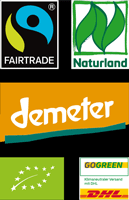Trees instead of apartments?
A question that is not easy to answer, that I cannot give a simple answer to. Apartments are needed, yes. But: Without unsealed green spaces, without trees to provide shade, without flowers, birds, and animals, the city is a concrete desert that is becoming increasingly overheated, flooded, smelly, and dusty. Who wants to live there? Or work? Or stroll and shop? Exactly.
It is quite obvious that urban planners and real estate developers are guided by cost-benefit comparisons, returns, and economic figures. And because these values are written in black and white in the Excel spreadsheet, but the emotional, cultural, and social added value of parks & co. cannot be easily priced in, a major study was conducted in 2022 to determine the true values of urban greenery. The Institute for Ecological Economy Research in Berlin has published some pretty interesting results.
What is your park worth?
Would you have thought that the Volkspark Hasenheide in Berlin, with its 120.8 acres of green space, has a benefit equivalent to around $3.69 million a year (!)?*
Here are the numbers:
– Value as a recreational space and meeting place (derived from a representative survey / choice experiment): €3,4500,000
– Reduction of 190 tons of greenhouse gases, avoidance of consequential climate change costs: $35,600
– Absorption of 4.5 million liters of heavy rainfall: relief for sewer system and flood protection: $183,000
– Filtering 2,000 kg of pollutants from the air, avoiding health consequences: §21,600
(More information can be found at IÖW.)
The value of the habitat for insects, animals and plants is not factored in. And one could argue that the park would be worth much more as a building site (the question is, for whom?) and that the development of apartments would create further, major added value. The question here is also: For whom? Certainly not for the common good.
City lettuce.
Parks and gardens can therefore do much more than just provide recreation. They filter the air. They cool. They catch water and mitigate heavy rainfall. And sometimes, as in allot settlements or urban gardening projects, they even feed the population. There are some very impressive figures on this too.
Based on the average harvest yields (5.45 kg/m²) and the determined cultivation area, it was calculated that urban gardeners in Berlin harvest 7.6 million kg and in Stuttgart 4.4 million kg of vegetables, herbs, and potatoes during the gardening season. With a statistical per capita consumption of fresh vegetables of around 150 kg per year, the harvest from Berlin’s urban gardens can supply around 50,000 people with fresh vegetables for a year. In Stuttgart, it is around 30,000 people.*
If you then imagine the transportation costs and waste this saves – not bad for a bit of green.
The housing shortage remains. Infrastructure improvements etc. remain. How can we manage this – without concrete jungles? I don’t think there is THE solution. Vertical gardens and green facades can improve the microclimate in neighborhoods. Converting commercial properties into apartments can also be a solution (incidentally, there are around 6,458,346 sq ft of vacant office space in Hamburg, Germany alone**). Other forms of housing such as multi-generational houses, retirement apartments etc. can reduce demand because existing apartments become vacant. Or perhaps it is “just” the realization that we do not need an average living space of around 517 sq ft per capita.
And: That we can even make a change if we plant the right plants on the balcony or in the garden (in addition to harvesting delicious tomatoes). Check out the “Green Lifestyle” article about plants that can cope well with drought: “About shade trees, verbena, and mulch.”. The next summer will be here sooner than you think.
What is your park, the allotment, the tree stump on the corner worth to you? What do you think about “trees instead of apartments”? Tell us about it in the comments, we look forward to hearing from you.
Sources:
*www.ioew.de/projekt/gartenleistungen
**www.abendblatt.de




